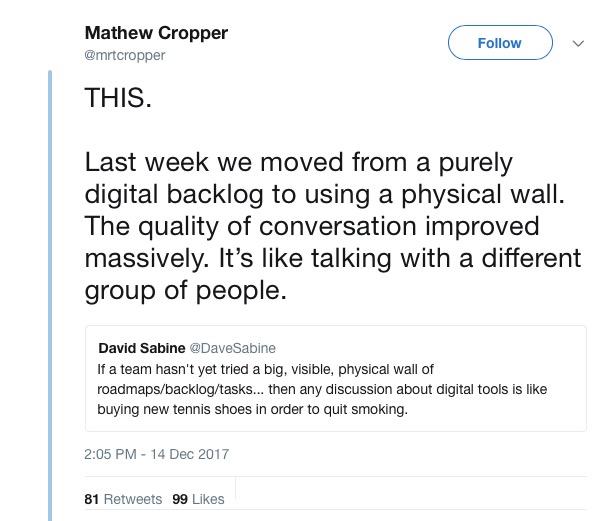Mediate connection in the Age of Entanglement

“We humans are changing. We have become so intertwined with what we have created that we are no longer separate from it. We have outgrown the distinction between the natural and the artificial. We are what we make. We are our thoughts, whether they are created by our neurons, by our electronically augmented minds, by our technologically mediated social interactions, or by our machines themselves…
…We are our perceptions, whether they are through our eyes and ears or our sensory-fused hyper-spectral sensors, processed as much by computers as by our own cortex. We are our institutions, cooperating super-organisms, entangled amalgams of people and machines with super-human intelligence, processing, sensing, deciding, acting…
…Our networks of commerce, power and communications are becoming as richly interconnected as ecologies and nervous systems. Empowered by the tools of the Enlightenment, connected by networked flows of freight and fuel and finance, by information and ideas, we are becoming something new. We are at the dawn of the Age of Entanglement.”
—Danny Hillis, The Enlightenment is Dead, Long Live the Entanglement
Mediating connection via technology
People usually think of technology as “anything that was invented after you were born”, as Alan Kay put it. But it’s much more useful to think of technology as anything made to solve a problem. Defining technology in this way opens our eyes to technologies that we all unthinkingly use every day, technologies that are essentially invisible because they have always been part of our lives.
We’ve been creating and using what I call human process technology — which includes language, writing, and science — for a very long time. Language, in all its forms, is the oldest human process technology:
“Every culture and tribe has its own language it has invented to solve the problem of real-time communication between its members. These technologies are so old that they are invisible to us. They are part of our culture, the human air we breathe. Language, writing, and science are tools outside our conventional, narrow-scope view of technology. We instantiate these tools using invented conventions: sounds, gestures, and symbols. These sounds, gestures, and symbols, however, are secondary features of these ancient technologies. Ultimately, language, writing, and science are primarily about human process.”
—Adrian Segar, Meetings are a mess—and how they got that way
Clearly, we are groping our way towards mediating connection with each other via technology. The COVID-19 pandemic provides a dramatic example. In a few months, we moved from meeting primarily in person to meeting online. Our connection became mediated by screens showing live videos of others and speakers broadcasting their voices. Printing, telephones, fax machines, email, and messaging have all impacted how we connect, but nothing has been swifter than our switch to meeting in real-time online.
In addition, technology is increasingly creating rich data that are useful or necessary to mediate connection. Automatic speech technology (ASR) systems caption meetings and translate into other languages in real time. Software routinely writes news reports, and can now generate accurate summaries of articles for more efficient human review. All of these technologies have become feasible and commonplace in the last decade.
Mediating connection in an increasingly entangled future
If artificial intelligence systems can perform the above tasks now, it’s not fanciful to predict that they will progressively take over human activities that currently mediate connection.
For example, future systems might be able to moderate group meeting conversations. (Imagine a Zoom breakout where an intelligent virtual assistant facilitates a small group’s conversation on a topic.)
Or consider meeting curation: a task that is taxing, if even possible for humans. Perhaps it will eventually be possible that an IVA for real-time meeting curation could do a comparable job to the crowdsourcing human processes I’ve developed during the last 33 years.
Ten years ago, the idea of speaking to your phone to tell it to do something was laughable. Today, the development of deep feedforward networks for acoustic modeling has made such technology invisible to my grandchildren. They just use it—and it (nearly always) works.
So let’s keep in mind how Danny Hillis concludes his article:
“We can no longer see ourselves as separate from the natural world or our technology, but as a part of them, integrated, codependent, and entangled.”
As our technology advances, it will become, more and more, a normal and largely invisible contributor to how we mediate connection. Its benefits—and drawbacks—remain to be discovered.


